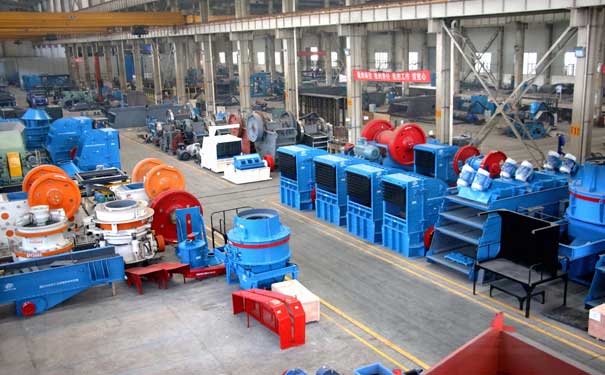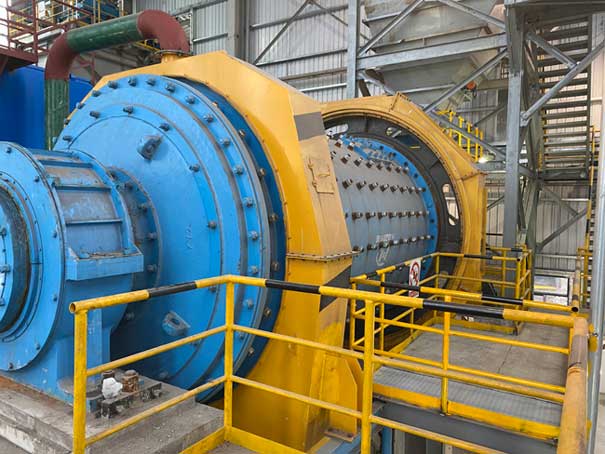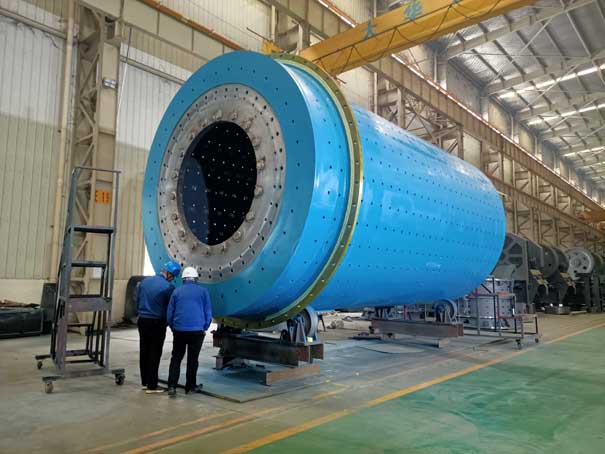The widely used grinding equipment in concentrators is ball mill and rod mill. The two have similarities in appearance and grinding principles, but there are also differences in structure, performance, and use. This article analyzes their similarities and differences from 7 aspects, and tells everyone how to choose a ball mill and a rod mill!
From the analysis of the crushing mechanism, whether ball mill or rod mill, when the cylinder rotates, the grinding medium (ball or rod) installed in the cylinder is lifted to a certain height as the cylinder rotates under the action of friction and centrifugal force. Then it is thrown down at a certain linear speed, so it impacts, grinds and squeezes the material in the jane to make it crush.
The working principle is similar, but the details of ball mill and rod mill are quite different, as shown below:
1. Shape structure analysis
The shape ratio of the two barrels is different. The ratio of the length to the diameter of the barrel of the rod mill is generally 1.5-2.0, and the inner surface of the liner on the end cover is a vertical plane. The ratio of the cylinder length to the diameter of the ball mill is small, and in most cases the ratio is only slightly greater than 1.
In addition, the simplified rotational speed of the rod mill is lower than the working rotational speed of the ball mill of the same specification, so that the medium in it works in a cascading state.
2. Analysis of grinding media
Rod mills usually use steel rods with a diameter of 50-100mm as grinding media, while ball mills use steel balls as grinding media. The difference in grinding bodies is the main difference between the two.
The steel balls of the ball mill are in point contact, and the steel rods of the rod mill are in line contact, so the working characteristics of the two are obviously different.
3. Type analysis (different discharging methods) in ball mills, grid-type ball mills and overflow-type ball mills are commonly used (named from different discharging section structures), while rod mills do not use grid plates to discharge ore, only overflow. There are two types of type and open type. The diameter of the hollow shaft at the discharge end is generally larger than that of the ball mill of the same specification.
4. Analysis of medium filling rate
The medium filling rate refers to the percentage of the grinding medium in the volume of the mill. For different grinding methods, mill structures, operating conditions and media shapes, the media filling rate has a suitable range, and too high or too low will affect the grinding effect. Generally, the filling rate of ball mill is 40%-50%, and that of rod mill is 35%-45%. In addition, the filling rate of self-mill is 25%-40%, and that of gravel mill is about 43%.
5. Stability analysis
During operation, the ball mill has no inertial impact, which ensures the normal and efficient operation of the equipment, reduces the downtime of the equipment, and improves the efficiency of production.
6. Use analysis
When heavy separation or magnetic separation of tungsten tin ore and other rare metal ores, rod mills are often used to prevent excessive crushing; in the second-stage grinding process, rod mills are generally used as the first-stage grinding equipment to produce. The ability is greater, and the efficiency is also higher. When processing soft or not too hard ores, rod mills can be used instead of short-head cone crushers for fine crushing, which is not only simple in configuration, but also low in cost, and simplifies dust removal in the workshop.
Because of the fine grinding materials, the ball mill is prone to over-crushing, which is not suitable for the gravity separation production line in metal ore dressing.
7. Performance analysis
The characteristic of the rod mill process is that the product is relatively coarse, but the particle size is uniform, contains less coarse particles and sludge, and is lighter in over-crushing. The particle size characteristics of the rod mill product are related to the ore crushed by the rod.
The performance characteristics of the ball mill are high production capacity, strong adaptability to materials, high fineness of the materials, fine discharging particle size, easy fine grinding, and significant energy saving, but the phenomenon of over-crushing is serious.




